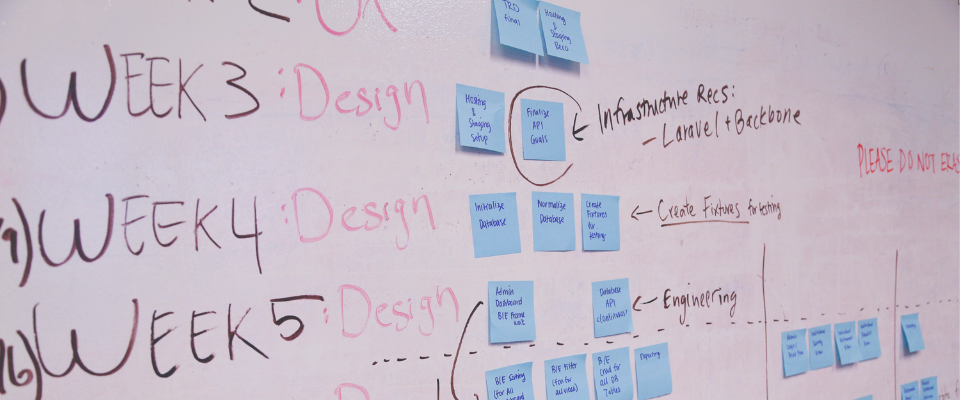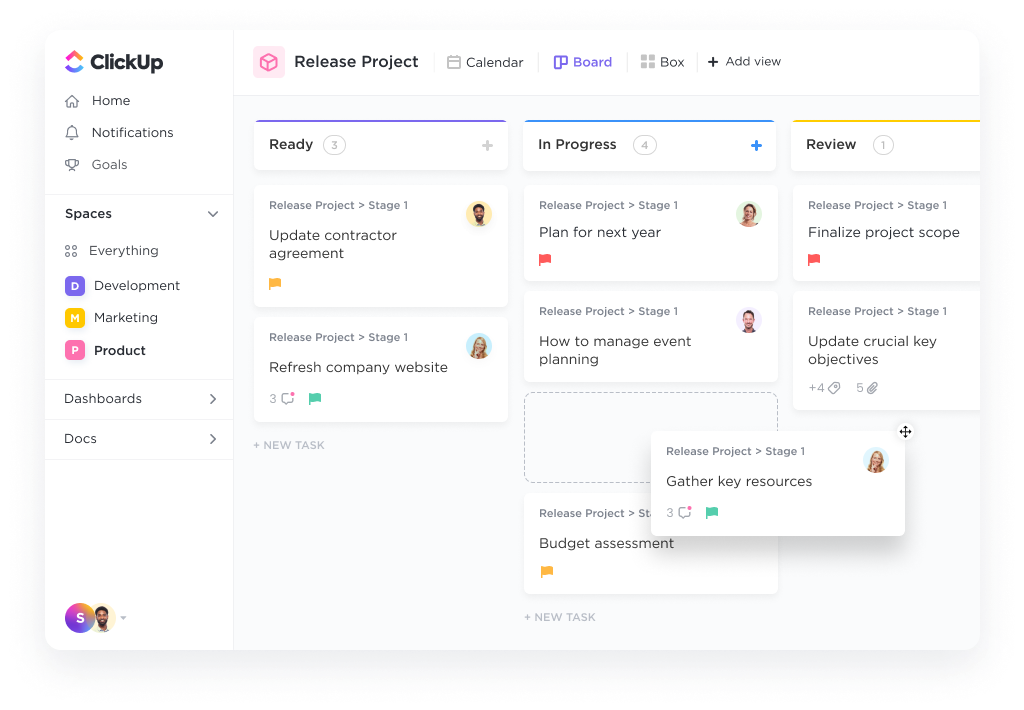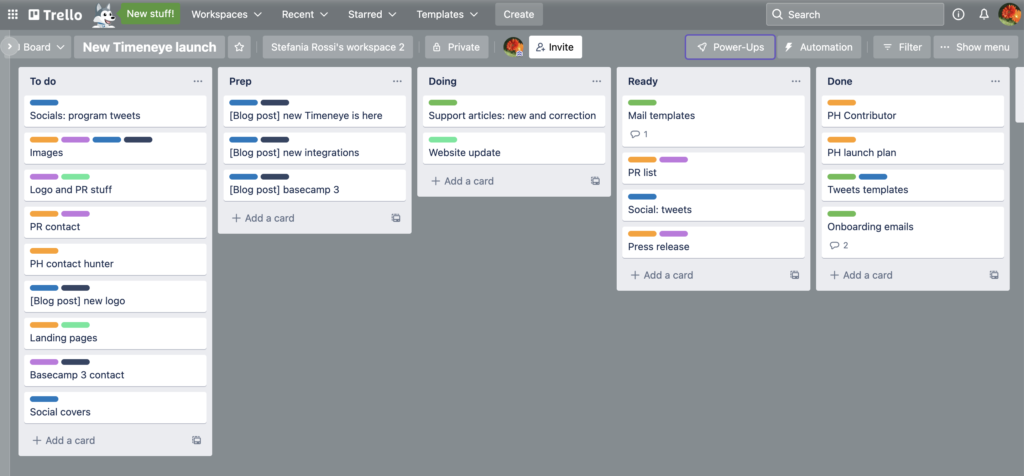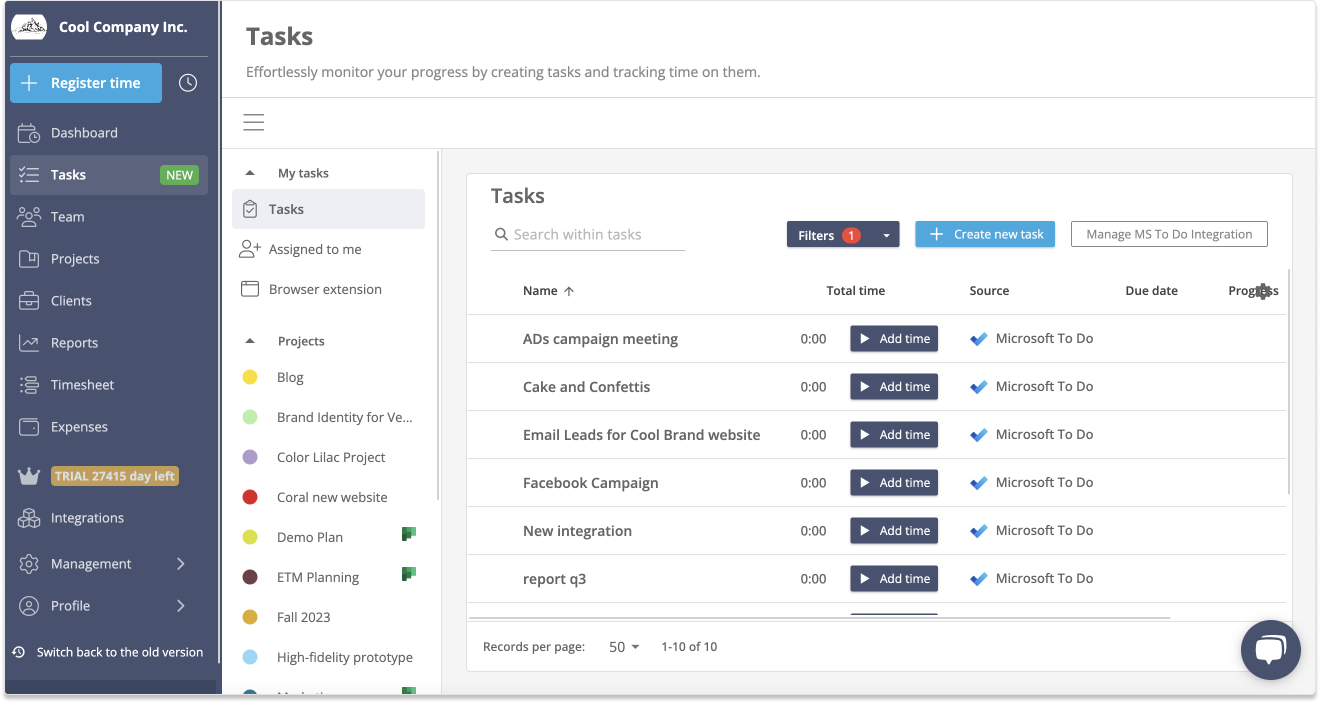Best Methods to Track Employee Hours and Boost Productivity
Discover the best methods for tracking employee hours and boosting productivity, from traditional timesheets to advanced time tracking software.


Even the most adept and meticulous project managers occasionally need the support of project management tools.
In this blog post, we will explore the best options available and help you find a solution that caters to all your project management needs in 2025.
Work has changed dramatically in the last few years. Technological advancements have revolutionized modern business, changing how teams communicate, organize, and execute work.
To help you navigate this digital landscape, we’ve created a list of the best tools to help teams manage their projects and time in 2025. These tools are designed for a variety of needs, ensuring that your team can work more effectively, stay organized, and maintain clear communication.
Short answer: yes.
Long answer:
While it's possible to manage a project with post-its, whiteboards, and spreadsheets, it's far from ideal. Designed to handle and monitor tasks with precision, project management tools come packed with features that cater specifically to these needs.
Project management software offers a multitude of benefits in terms of organization, clarity, and workflow optimization
PM tools bring order and organization for projects and tasks;
In a hybrid or remote team environment, everyone can effortlessly access the project plan and monitor progress regardless of their location;
Clear task assignments within the software ensure that everyone knows who is responsible for what; Automated notifications and alerts provide team members and managers with real-time updates, ensuring everyone stays informed about assignments and their progress;
Attachments and related documentation are safely stored within the software as well;
Costs are generally reasonable (though this can vary on the software and the plans you purchase);
PM tools often offer insights, project summaries, and dashboards are available for tracking multiple projects.

Beautifully designed, Asana is fast and overall very simple to use. Asana gives managers and team members visibility on tasks, with project timelines and boards to check the progression of the projects. Tasks can be assigned to each individual, who can comment on the task to share notes and updates. The “Mentions” feature also makes it easy to notify team members when a task has been assigned or updated. Asana also offers reporting tools, and automation features to simplify routine and repetitive tasks.
Asana top features: Effortless task assignment and intuitive, visually-appealing interface
Best for: agencies and design teams
Price: generous free plan with basic features, paid plans (that include features like timelines) starting from $10.99 per user, per month

ClickUp’s tagline highlights its core mission: “One app to replace them all”. In ClickUp you can organize the projects in multiple views: kanbans, lists, and boxes, making it the best tool for small and medium-sized agile teams who need to keep organized. Creating projects and assigning the tasks that make up the project is super easy. It offers many features (from task management to goal tracking, from documentation management to milestones, and more). Its many options make ClickUp a tool that can fit many different teams’ needs. One of the standout aspects of ClickUp is its versatility as an all-in-one tool. In addition to its core features, ClickUp has recently incorporated chat functionality and innovative generative AI capabilities.
Pro: versatile, feature-packed with many different views to cater to various project management needs
Best for: agile teams looking for an all-in-one solution
Price: free plan for personal use, team plans start from $7 per user, per month

Jira, a behemoth in the realm of project management tools, is purpose-built for agile development and software projects. It enables users to create both scrum and kanban boards, so teams can visualize and manage their pipelines. Although it may appear daunting at first, Jira proves to be an invaluable solution for development teams seeking to track bugs and issues, while gaining real-time visibility into task progress.
Pros: tailored for scrum and agile methodologies, ideal for managing intricate projects
Best for: software development teams/ teams handling projects with complex dependencies
Price: generous free plan for up to 10 users, after that the pricing starts at $7.50 per user

When discussing kanban, it's impossible to overlook Trello. Trello's iconic core feature is its kanban boards, where tasks are organized into cards that can be moved forward as the project progresses. With its simplicity and vibrant interface, Trello becomes even more powerful with automation features and add-ons, known as "Power-ups". The Trello Power-up marketplace offers a wide range of apps for any additional features you may need on your Trello board.
Its drag-and-drop functionality makes Trello intuitive and user-friendly, even for those who may not be tech-savvy.
Trello also includes its Butler automation feature to put workflows on autopilot and maximize efficiency.
Pros: simple, visual, colorful, and fun to use
Best for: companies looking for a simple, visual platform focusing on team collaboration
Price: free plan available, but the best features like timelines, multiple boards, calendars, etc start at $10 per user per month

Don't overlook Microsoft Planner, especially if your team is already using Microsoft software or the Microsoft 365 suite. This visual tool is a must when it comes to creating project plans and organizing tasks. Microsoft Planner used to feel a bit limited compere to other software, however Microsoft has recently made major updates to Microsoft Planner, essentially merging many functions of Microsoft Projects (like Gannt chart for example) into the Microsoft Planner higher-tier Plans.
Therefore, if a seamless, user-friendly experience integrated with the Microsoft 365 suite is what you seek, Microsoft Planner looks like the optimal choice.
In Microsoft Planner, you can organize project tasks in different views, including the Kanban boards with deadlines and labels, assigning them to the team members. And you can top all that by adding time tracking with a third-party app.
Pros: fully integrated with Microsoft 365
Best for: teams already using Microsoft 365 and looking for a lightweight PM tool
Price: requires Microsoft 365, there is a variety of plans for personal and business use
Learn how to seamlessly add time tracking to Microsoft Planner
Monday is a comprehensive work management platform serving a wide variety of industries, company needs, and case scenarios. The strength of this platform is its flexibility and adaptability, as users in Monday can build their workflows through modular blocks. Its vast offering of features includes customer relationship management (CRM), customizable workflows, project management, resource management, portfolio management, reporting, and goal tracking.
It's an effective solution for companies across different industries who need to build and streamline workflows and organize them in dashboards and visually beautiful reports.
Pros: customizable and flexible, with advanced reporting
Best for: businesses of varying sizes aiming to build and optimize their unique workflows
Price: free plan for individuals, team plans start from $8 per seat, per month
ProofHub combines project management, task tracking, time tracking, collaboration, proofing, and communication tools into a unified platform. Apart from English, ProofHub is available in German, Spanish, Portuguese, French, Russian, Italian, Dutch, Chinese (Taiwan), Turkish, and Polish.
Unlike many SaaS B2B products, ProofHub stands out by offering a flat-rate pricing model rather than a per-user, per-month fee. This approach can be a game-changer for budget-conscious businesses that need clear, predictable software expenses annually.
Pros: comprehensive and cost-effective platfrom covering most PM needs
Best for: teams and even enterprises, remote teams who need a painless approval process, like design teams
Price: Essential plan starts at $45/month
Gantt charts galore! TeamGantt enables users to create visual timelines for their projects. Gantt charts are incredibly versatile and can seamlessly integrate into various workflows, making them an ideal choice for project management. The same can be said for TeamGantt, which complements the simplicity and effectiveness of Gantt charts with additional features.
Users love TeamGantt's drag-and-drop feature for easy timeline creation and task management, along with project views, project history tracking, time tracking, subtasks, dependencies, and the Planned vs actual timeline comparison.
Pros: easy drag & drop features for visualizing and managing project timelines
Best for: digital and marketing agencies, but also industries like construction and manufacturing
Price: plans start at $19 per manager, per month
Wait, what is a time tracking tool like Timeneye doing among the Project Management tools?

Because Timeneye, along with its smart time tracking features has always featured light project management tools. Recently, with the new Task management feature, Timeneye has joined the club of easy-to-use project management tools for easy project and task tracking.
In addition to accurately allocating tracked time to the appropriate project and phase, Timeneye provides project views to monitor the progress of the project, as well as task management capabilities that include budget tracking and expense tracking.
Lastly, it integrated with other tools like Microsoft Planner, Microsoft To Do, and Outlook Calendar, for accurate task tracking and organization across different platforms
Pros: seamlessly integrated with the Microsoft Suite
Price: limited free plan available, starter plan begins at $9 per user/month
These featured tools are just a glimpse into the vast array of possibilities available in the ever-expanding project management software market. With so many options to choose from, the opportunities for finding the perfect fit for your team's needs in 2024 are truly endless.
These questions can help make the choice easier:
If you're unsure where to start, or if the main project management tools look intimidating, try a time tracking tool like Timeneye, that combines time tracking with light project management.
Here are two options to kickstart your journey toward enhanced productivity:
1) Try Timeneye for free. If you’d like to see Timeneye in action and possibly test it with your team, you can start your free trial today.
2) Schedule a demo session with us, where we can show you around, answer your questions, and help you see if Timeneye is the right tool for your company.
The best project management tool for 2025 depends on your team's needs. Asana is ideal for visually intuitive task management, ClickUp is an all-in-one solution for agile teams, Jira is best for software development, and Monday.com offers flexible workflow customization. Tools like Microsoft Planner and Trello work well for simpler task organization, while Timeneye integrates time tracking with light project management.
Project management software helps teams stay organized, track progress, and improve collaboration. In 2025, with remote and hybrid work becoming standard, these tools provide real-time visibility into projects, automate repetitive tasks, and integrate with other business software to enhance efficiency.
Key benefits of project management tools include:
To choose the right PM tool, consider your project complexity, team size, budget, and preferred workflow. For agile teams, ClickUp or Jira is best. For visual simplicity, Trello or Asana works well. If you need integrated time tracking and productivity inshigts, Timeneye is a great choice.
Discover the best methods for tracking employee hours and boosting productivity, from traditional timesheets to advanced time tracking software.
Discover the top Power BI templates for analyzing productivity, saving time, and improving efficiency with recommendations and best practices.
Discover the best practices for efficiently tracking time on a large scale with Timeneye for over 100 projects.